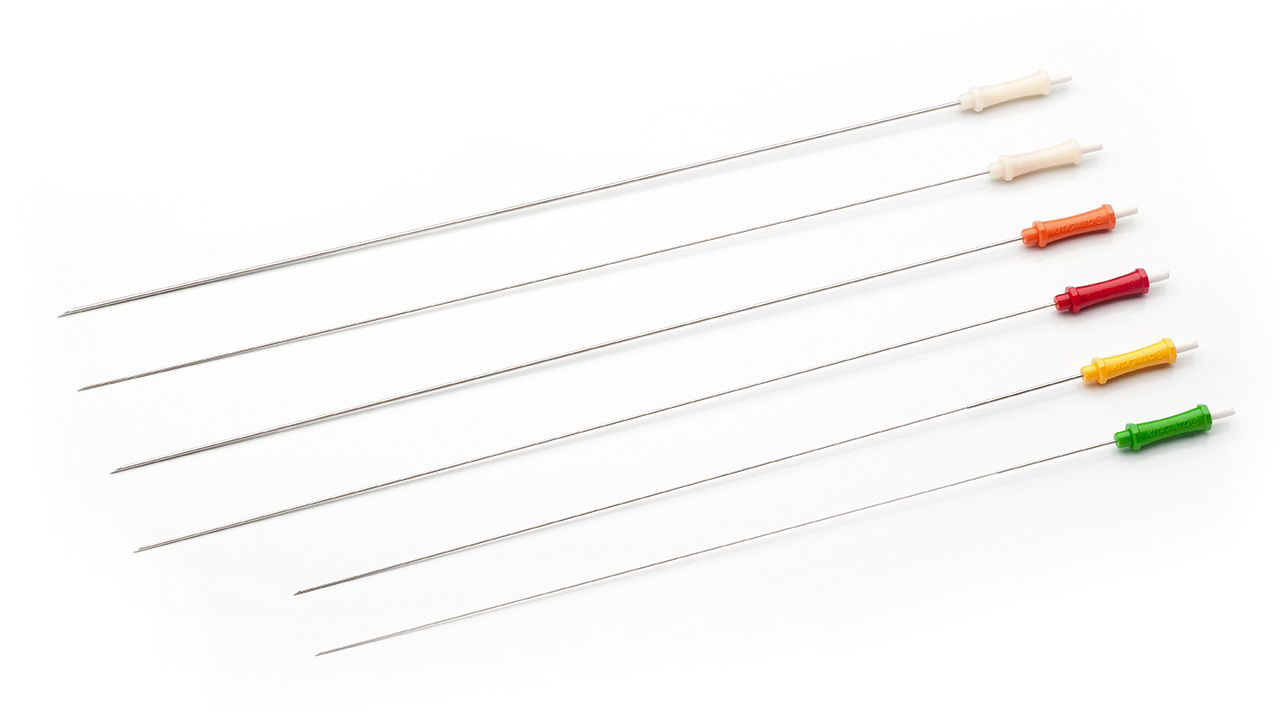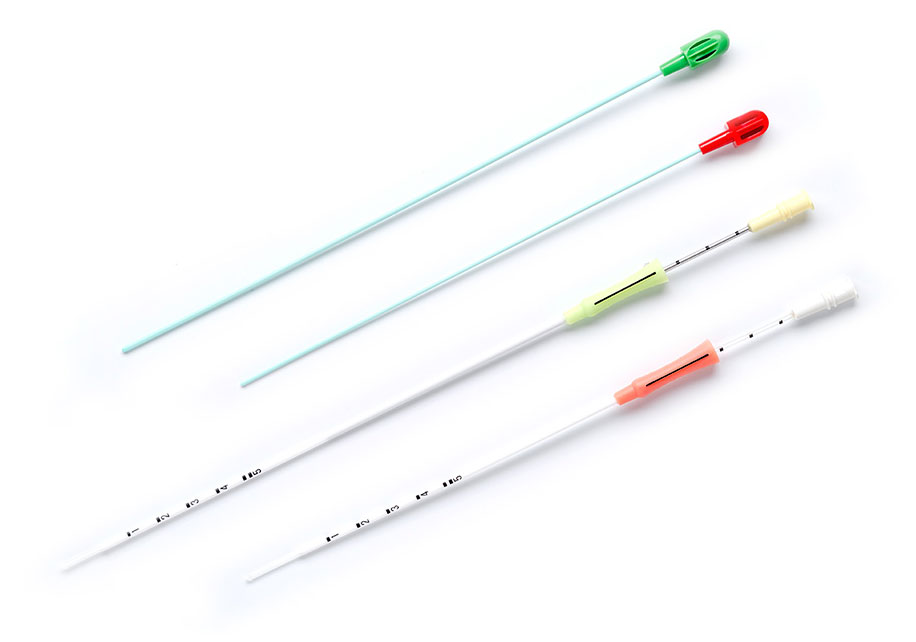Kitazato offers a broad selection of quality products that maximize success at every step of the IVF cycle.
Our oocyte retrieval needles and ET catheters allow gynaecologists to more easily fulfil their IVF needs during oocyte retrieval and embryo-transfer.
KITAZATO OOCYTE RETRIEVAL NEEDLES

Kitazato’s single and double lumen Oocyte Retrieval Needles allow an efficinte and safe oocyte pick-up.
An efficient aspiration pressure will maximize the oocyte recovery rate and reduce the risks of drastic temperature changes and mechanical stress to the oocyte.
Less tissue injuries, faster pacient recovery
Thanks to the quality of their steel and their original triple cut blade, Kitazato OPU Needle minimize trauma and tissue injuries, allowing a fast recovery of the patient after the ovarian puncture.
Kitazato offers a full range of “Thin Wall” needles from 16G to 21G.
Smaller external diameters reduces the possibility of bleeding and the risk of injuries in the uterine lining whilst minimizing stress in the oocyte during the aspiration.
Laser made echogenic tip
Kitazato OPU Needles have an echogenic tip marking that guarantees high visibility to the very tip for the correct approach to the follicle.
Handle with positioning marking
The ergonomic handle is provided with positioning marking that helps to control the needle blade’s position throughout the puncture process.
Learn more about our Oocyte Retrieval Needles here.
KITAZATO CATHETERS

Embryo Transfer is a quick and simple procedure but also one of the most important steps in the IVF cycle. Choosing the appropriate ET catheter is crucial for a successful implantation.
Kitazato offers different types of catheters to suit different doctor preferences and needs.
EC-PRO ET Catheters offer control, visibility and smoothness to minimize trauma to the patient and maximize embryo implantation:
- Malleable guide with memory to maintain its shape for a long period of time.
- Smooth tip and friction-free materials to ensure an atraumatic insertion and better comfort of the patient.
- Guide with a wide opening allowing the inner catheter to be inserted easily.
- The approximation mark on the catheter helps to monitor the insertion in the uterine cavity.
Precurved ET Catheters with 30º curvature and high flexibility ensure an easy navigation through the cervix in all kinds of anatomies.
- Tip with a rounded bulb to reduce trauma during insertion.
- Approximation marks on the guide and catheter to allow great precision in the maneuver.
- Great visibility under ultrasound guide that improves positioning and precision inside the uterus during the embryo transfer.
In addition to its wide range of catheters for embryo transfer and insemination, Kitazato offers the Towako® Method to perform a transvaginal ultrasound guided embryo transfer to the endometrium by piercing the myometrium.
Discover Kitazato complete range of Catheters
here.